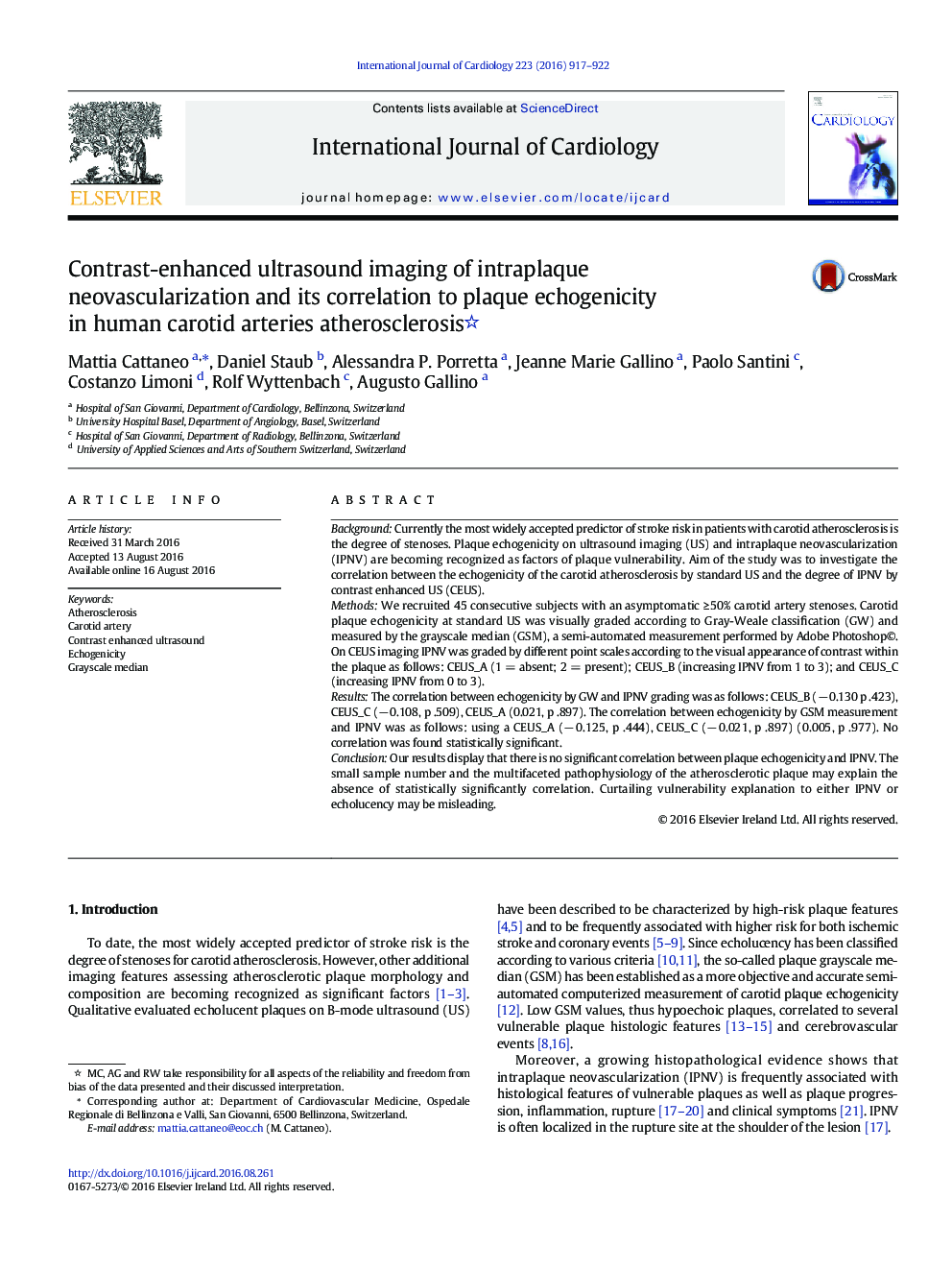| Article ID | Journal | Published Year | Pages | File Type |
|---|---|---|---|---|
| 5963306 | International Journal of Cardiology | 2016 | 6 Pages |
BackgroundCurrently the most widely accepted predictor of stroke risk in patients with carotid atherosclerosis is the degree of stenoses. Plaque echogenicity on ultrasound imaging (US) and intraplaque neovascularization (IPNV) are becoming recognized as factors of plaque vulnerability. Aim of the study was to investigate the correlation between the echogenicity of the carotid atherosclerosis by standard US and the degree of IPNV by contrast enhanced US (CEUS).MethodsWe recruited 45 consecutive subjects with an asymptomatic â¥Â 50% carotid artery stenoses. Carotid plaque echogenicity at standard US was visually graded according to Gray-Weale classification (GW) and measured by the grayscale median (GSM), a semi-automated measurement performed by Adobe Photoshop©. On CEUS imaging IPNV was graded by different point scales according to the visual appearance of contrast within the plaque as follows: CEUS_A (1 = absent; 2 = present); CEUS_B (increasing IPNV from 1 to 3); and CEUS_C (increasing IPNV from 0 to 3).ResultsThe correlation between echogenicity by GW and IPNV grading was as follows: CEUS_B (â 0.130 p .423), CEUS_C (â 0.108, p .509), CEUS_A (0.021, p .897). The correlation between echogenicity by GSM measurement and IPNV was as follows: using a CEUS_A (â 0.125, p .444), CEUS_C (â 0.021, p .897) (0.005, p .977). No correlation was found statistically significant.ConclusionOur results display that there is no significant correlation between plaque echogenicity and IPNV. The small sample number and the multifaceted pathophysiology of the atherosclerotic plaque may explain the absence of statistically significantly correlation. Curtailing vulnerability explanation to either IPNV or echolucency may be misleading.
